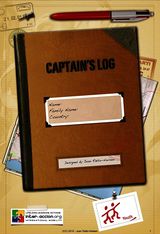Identification and Recognition of Learning Outcome
Contents
Learning Outcome
“Learning outcomes are statements of what a learner knows, understands and is able to do after completion of learning.”[1] Learning outcome includes skills, knowledge and attitudes.
Identification and Validation
EU distincts between the terms of identification and validation in order to describe the learning outcome. [2]
Identification
- Makes the individual’s learnings and outcomes in a general way visible
- Rather in a less formal way
- Making use of different and free forms of description, assessment and documentation
Validation
- The confirmation by a competent body
- that learning outcomes have been assessed
- against predefined criteria
- compliant with the requirements of a validation standard.
- Validation typically leads to certification.
Your Perspective on Identification and Validation
In all learning settings we are able to describe competency levels and the specific mixture of competences required for concrete tasks. This description must go beayond formal grades in order to cover the broad aspects of competencies. The focus should be set on applicability. Especially in non-formal education educational providers and educators need to think beyond certification, as the latter is often not available: validation is in consequence connected with a credible authority in form of a formal learning provider.
The more common approach will be identification and credible and evidence-based description of competency levels and competency development: Describing Competency Development
Competetency frameworks give orientation
Competency frameworks might give orientation and help to gain focus, in example Council of Europe's "Competencies for Democratic Culture" or EU's Key Competencies for Lifelong Learning. You will find examples on Handbooks for Facilitators. In addition the European Commission and Council of Europe took care for developing and promoting tools like:
European Qualification Framework
On a systemic level there is as well another important European framework. The European Qualification Framework (EQR) and the subordinated EU member state's national qualification frameworks seek to gain more compatibility between the different national education systems. The main challenge is here to describe vocational profiles and educational outcome for a broad range of educational fields. Therefore the competency model is elaborated enough to offer a profound description of the concrete validations as a basis for certification and documentation of the gain of knowledge and skills. [3]
Methodologically member states agreed on the EQF in 2008, which is concretized through every member state with a national qualification framework. [4] On 8 levels a definition for the needed knowledge, skills and competencies was defined, from level one – “basic knowledge” – up to level 8 –“knowledge at the most advanced frontier of a field of work or study and at the interface between fields”. The framework provides therefore "benchmarks for qualification levels across Europe and encourage the embedding of validation systems with formal qualifications system"[1] Member states develop their national qualification frameworks like in Germany through a Working Group on national level and a coordination group of Länder and federal government.[5]
Articles, Checklists and Methods
References
- ↑ 1.0 1.1 European Centre for the Development of Vocational Training, 2009: [www.cedefop.europa.eu/EN/Files/3054_en.pdf The shift to learning outcomes Policies and practices in Europe]; p. 30 Cite error: Invalid
<ref>tag; name "cedefop" defined multiple times with different content - ↑ European Centre for the Development of Vocational Training, 2009: [www.cedefop.europa.eu/EN/Files/3054_en.pdf The shift to learning outcomes Policies and practices in Europe]; p. 15
- ↑ European Commission: Learning Opportunities and Qualifications in Europe
- ↑ http://ec.europa.eu/ploteus/content/descriptors-page
- ↑ Deutscher Qualifizierungsrahmen: http://www.dqr.de/
Example: Civic Engagement Workshop
The education programme from Poland, Ukraine and Belarus worked with a portfolio based on EU youthpass. Participants registered a platform [1] and safed all their learning achievements related to specific competences described in EU and OECD documents in a tailor made portfolio. At the end of the programme, the YouthPasses were attached to the certificates.
Example: Captain's Log
An example for a structured competency-related portfolio tool which might be used in your training or training programme. More...
Related








